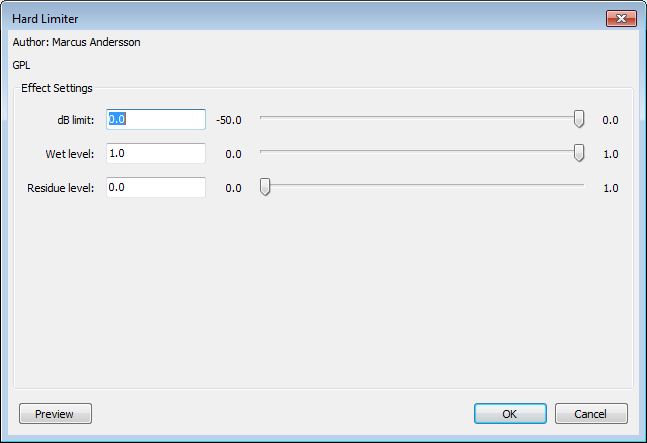Hard Limiter
From Audacity Manual
Hard Limiter can also sometimes be used to remove stubborn clicks that peak well above the general level of the waveform. See the Wiki tips about using Hard Limiter for click removal and other methods.
dB limit
The amplitude level above which the input signal is processed. If the Wet level and Residue level settings are left at default, the peak level of the result will be clipped down to this level.
Wet level
The amount of the clipped signal that is fed to the output. It thus acts as a volume control for audio below the dB limit. If left at default level of 1.0, all sounds below the dB limit are fed to the output. At settings below 1.0, the volume of the result will be reduced.
Residue level
This allows a proportion of the signal that has been removed by clipping to be added back to the output. By default the value is 0.0 and so all of the clipped signal is discarded. By raising this level, some of the clipped signal will be restored, making the limit softer. More peaks and troughs of the original waveform will be retained, and the resultant volume level will be higher than that set in the dB limit.
